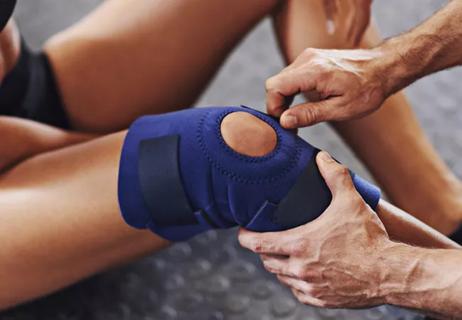By Nelita Iuppa, DNP, MS, BSN, NEA-BC, RN-BC, FHIMSS
Advertisement
Cleveland Clinic is a non-profit academic medical center. Advertising on our site helps support our mission. We do not endorse non-Cleveland Clinic products or services. Policy
Nurses everywhere are increasingly taking an interest in evidenced-based care and nursing research as a means to advance their practice and ensure high-quality patient outcomes. The electronic medical record (EMR) is a key tool in unlocking a number of opportunities to investigate relationships between care practices and their lasting effects.
To successfully participate in clinical inquiries using the EMR, nurses must cultivate their skills as data scientists to ensure they can gather, interpret and analyze EMR information as their primary research data source.
Understanding your EMR
EMRs are a series of interconnected databases. They may come from the same program or from several clinical systems interfaced to one another to electronically exchange information. EMRs are modular in format, which means that different subspecialties are built at different times to ‘fit’ into the larger architecture of the core system.
Perhaps the most powerful and perplexing element of the EMR is that systems are constantly changing. This evolution is the result of the needs of clinicians, ensuring the latest fixes or enhancements are installed, and fitting new systems into the digital environment.
Considerations for getting started
Nurses looking to use an EMR as a research data source should start the research process by ensuring information accuracy for the time range in which they are looking to collect data.
- Did the EMR design remain the same during the intended time period?
- If the EMR changed, what additional pieces of data are needed to accommodate the changes?
For example, a nurse investigating the impact of a specific intervention on patient falls prevention should ask:
- What fall assessment or risk scoring tool was used during the time frame of my study?
- Did that electronic tool change at all during this timeframe?
- If the tool changed: How will I reconcile the use of different tools as part of my study design?
Using EMR data for nursing research
Most nurse scientists would advise nurses to begin thinking about their research data at the start of the research process. Once the research question is determined, the nurse researcher should consider all the variables that may impact the data from an EMR.
This is the moment when clinical nurse thinking and data scientist logic combine.
- Consider Your Audience. It is important to know from the beginning for whom your study results are intended. For example, if you study “Medication errors related to staffing ratios and caregiver fatigue,” you may target different EMR data elements or analyze methods differently for caregiver burnout of a bedside staff nurse compared to a nurse leader looking at different staffing models that impact patient care.
- Know your Data Abstractor. Often, the IT expert who is assisting in retrieving data for research projects may have limited clinical knowledge and need further assistance to interpret the initial data request. For example, if you ask for “CLABSI rates for the past year for your nursing unit,” it’s possible that your data abstractor may literally go and look for an EMR data element called “CLABSI,” not realizing that in order to process this request, they actually need to look for all patients with central lines and different documentation markers indicating infection (such as temperatures, line documentation, antibiotics, orders and laboratory results).
- Identify the Source of your Data: Because EMRs have many different interconnected databases that serve varying purposes, it is important to be specific about the source of your data and its function; i.e., clinical trials/research, patient care, billing/claims, or regulatory and business operations. If you were looking to do a research study identifying patients “Flagged with a diagnosis of COPD,” you would get very different information if you went into a chronic care population health registry than an acute clinical care path with admission orders and intervention data.
- Determine Where Data is Documented: Sometimes data can live in multiple places and can be entered by different caregivers in the same EMR module. This is important to know when asking for data. For example, if you are trying to retrieve information for “Patients Who Smoke,” you would be able to locate this data in the documentation of the patient’s past medical history, education provided, physical assessments, respiratory therapy documentation or clinician notes. Each of these sources is accurate and provides a slightly different viewpoint in terms of data elements. Determine which source of documentation is most relevant to the study prior to requesting data.
- Identify the Modality of Data Entry: Data can be entered into an EMR in different ways. The source of truth can actually live outside the EMR. Medical devices collect information and transmit into the record. Patients may enter their own self-reported data, data may come from outside systems (i.e., radiology films), or it can be calculated automatically based on an algorithm or scale. Knowing how data was entered into the EMR is extremely useful in retrieving information. For example, if a researcher is trying to identify “Patients at High Risk for Skin Impairment,” there may be a need to pull a risk assessment score from the documentation. That score by itself may just be a number without any context. The researcher may need to request other documentation fields that contributed to that number in order to get the information needed to interpret their study results.
- Requests for Data: One common misstep that nurse researchers make when requesting EMR data is not allowing for adequate time to pull the information. If completing research for a school project, publication deadline or specific presentation date, leave extra time for data abstraction and analysis. Obtaining the exact elements you are hoping to utilize in your study may require several rounds of data collection. Request a small subset of information to review and analyze prior to the actual research study information. This is a great way to identify any missing elements in the data request – specifically, ensuring there are enough variables. This will help with data interpretation time and reduce the likelihood of multiple data extractions.
- Data Interpretation: Use caution when generalizing EMR study results to large populations, unless conducting a large metadata study. Documentation practices tend to vary by specialty and site. By only focusing on what is present in the documentation you may miss the documentation culture. There are times when data is entered late, omitted or entered in error so it requires careful consideration of all contributing circumstances when drawing conclusions. For example, it may appear that a Foley catheter was inserted in a patient for nine days in the EMR data, but the clinicians may have forgotten to document the removal. Carefully consider if what you see in the data is consistent with actual practice and when other types of data validation are required.
The electronic medical record is an incredibly powerful tool that nurses can utilize for high quality research outcomes. The key to successfully using the EMR as a data source is to consider how it was designed and how it is used by caregivers. These skills are essential in cultivating the nurse scientist mindset.
Nelita Iuppa is the Associate Chief Nursing Officer of Informatics for the Cleveland Clinic Health System and Cleveland Clinic Main Campus.








